|
 |
|
| THE TOWERS OF TREVISO |
| |
| The first news, about the towers in Treviso, go back to 12th century; these
buildings were used as residences (one, belonging to da Romano Family, was used as prison), but most of the
towers had been raised for strategic aims. |
| |
|
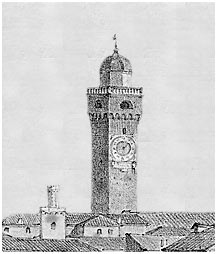 |
|
One of the most important towers was located near the Porta St. Agostino, but there were
several towers along the Walls.
Their number decreased in the centuries on one hand because the way of fighting
was changed, on the other hand because the towers had been left or they were collapsed owing to earthquakes, as
it happened in 1117, in 1222 and in 1551. |
| The Torre Civica (Municipal Tower) of Treviso as it appears in a picture in 1853. |
|
| |
| |
| There are the following towers today in Treviso: |
|
| |
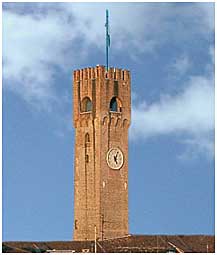
The Municipal Bell Tower today. |
 |
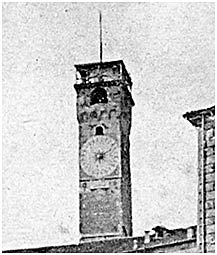
The Municipal Bell Tower of Treviso
before 1870. |
|
| The TORRE CIVICA (Municipal Tower): its look changed
in the history as the appearance of the near Palazzo della Prefettura (Prefecture Building). Municipal Tower, Prefecture Building and Palazzo dei Trecento are the symbol of Treviso all the time. |
| |
|
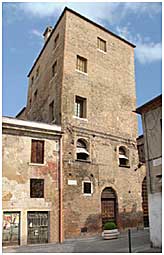
The Torre dei Canonici overlooking Piazza Pola - 1200 |
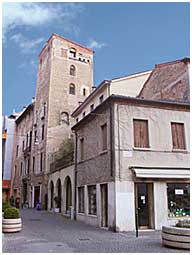
The Torre degli Oliva - 1200 - |
| |
|
The TORRE DEGLI OLIVA (Oliva’s Tower),
in Via Paris Bordone, is a brick building with a square plan; it was raised in 13th century, its lower part has been entirely
rebuilt, while the upper one, which experienced some alterations, let make out still the original shell.
Most windows have an upper blind arch slightly hollowed or without sticking out of the wall. |
| |
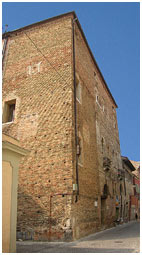
The Torre del Visdomino |
 |
The TORRE DEI CANONICI, placed in Via Paris Bordone,
overlooks Piazza Pola; it was built in thirteenth century by bricks, as the other towers.
The history of this tower
was marked by many restorations; one of the most important works was supervised by the canon P. Loredan at the
beginning of sixteenth century; the left part was restored heavily in that period then other restorations were made in nineteenth century.
The TORRE DEL VISDOMINO (Visdomino’s Tower)
was called Torre Cornarotta (Cornarotta’s Tower) in ancient times because it belonged to the homonymous family.
This tower was bought in 16th century by the Burchiellati family, which gave the building its name; Mr. Bartolomeo
Burchiellati, medicine professor at the Padua University, lived in it in the second half of 16th century.
Arturo Martini, Trevisan sculptor, used this building as his office from 1909 to 1915. |
| |
|
|
| |
|
|
|
| |
|
|
|
|


